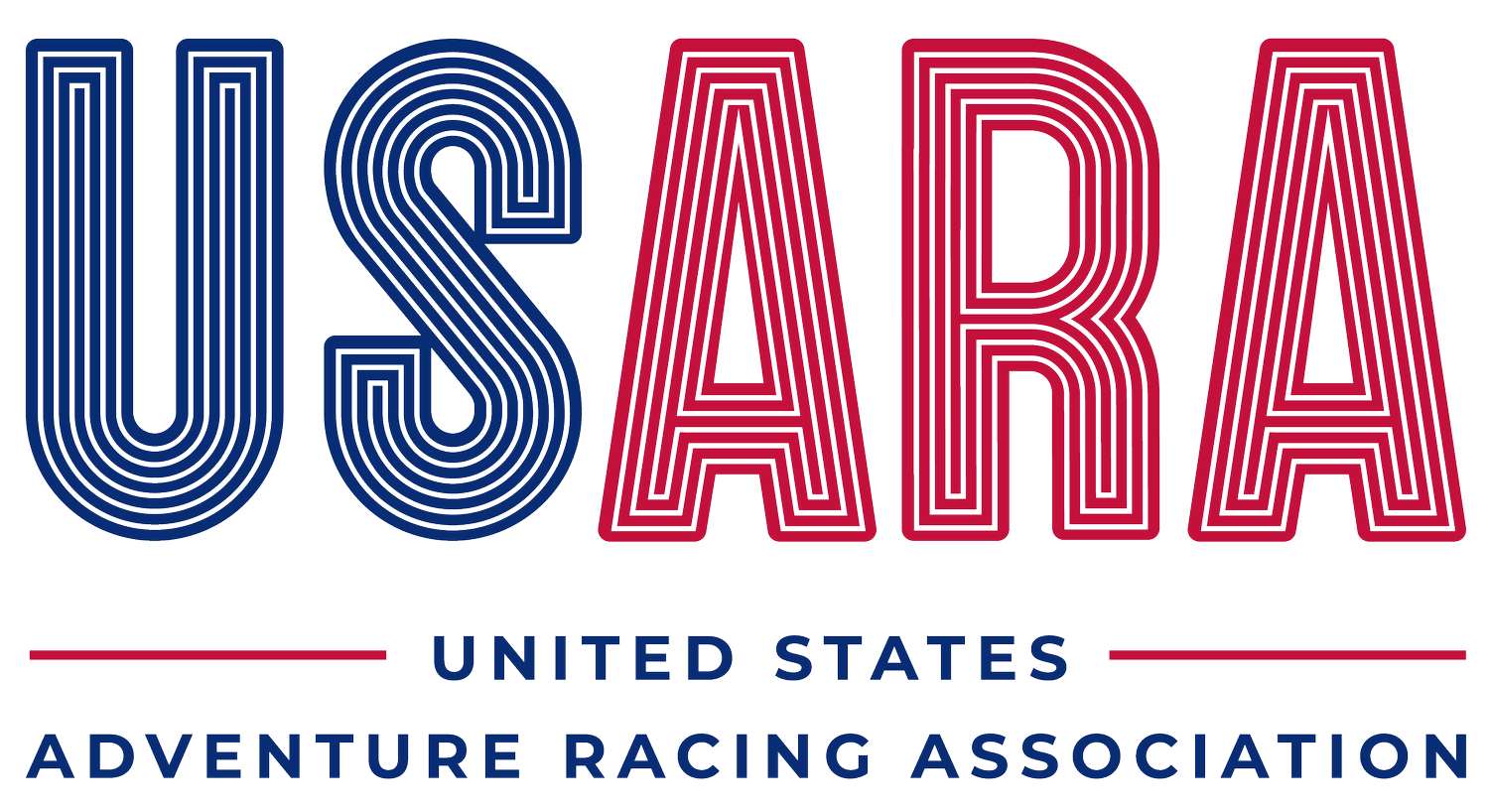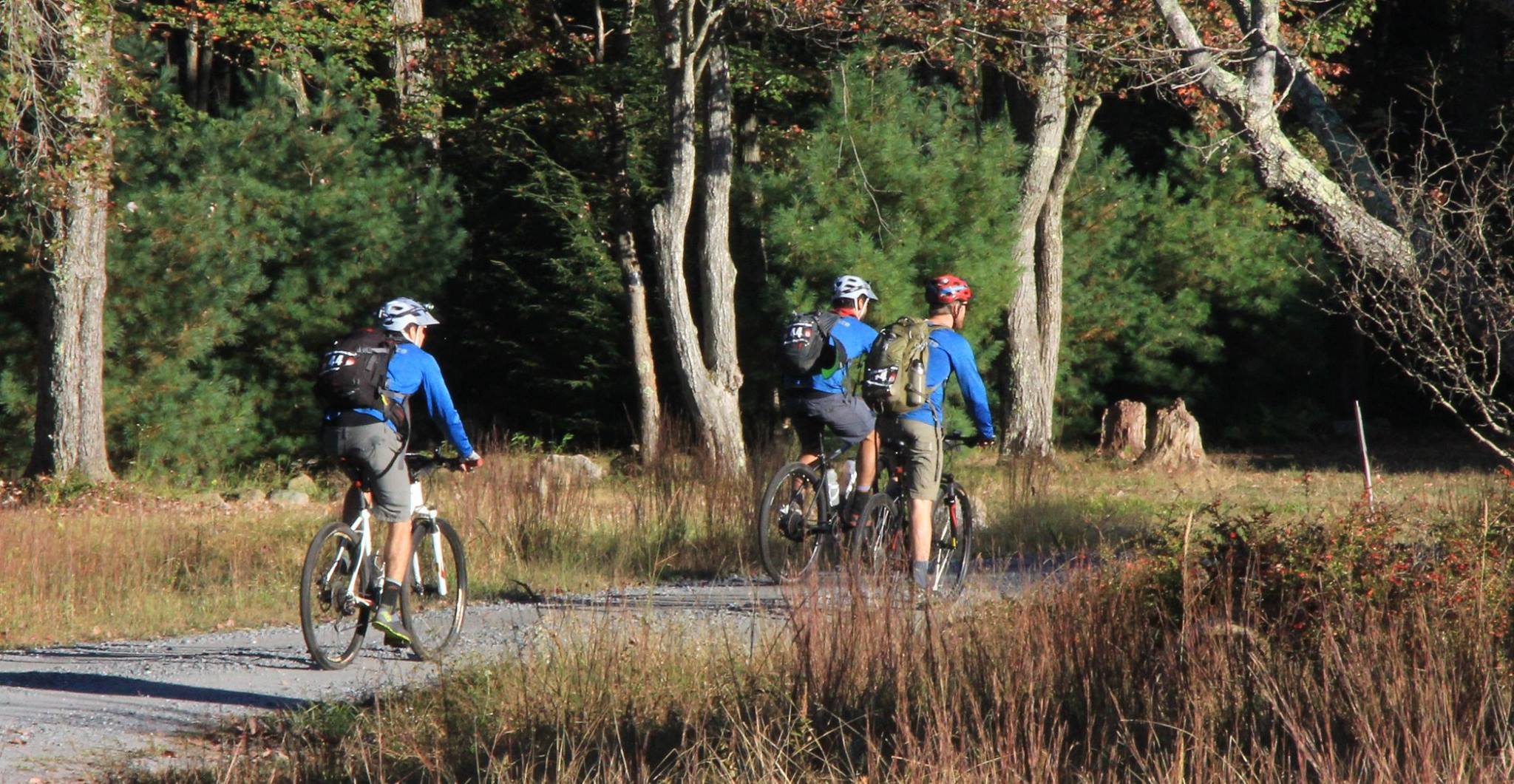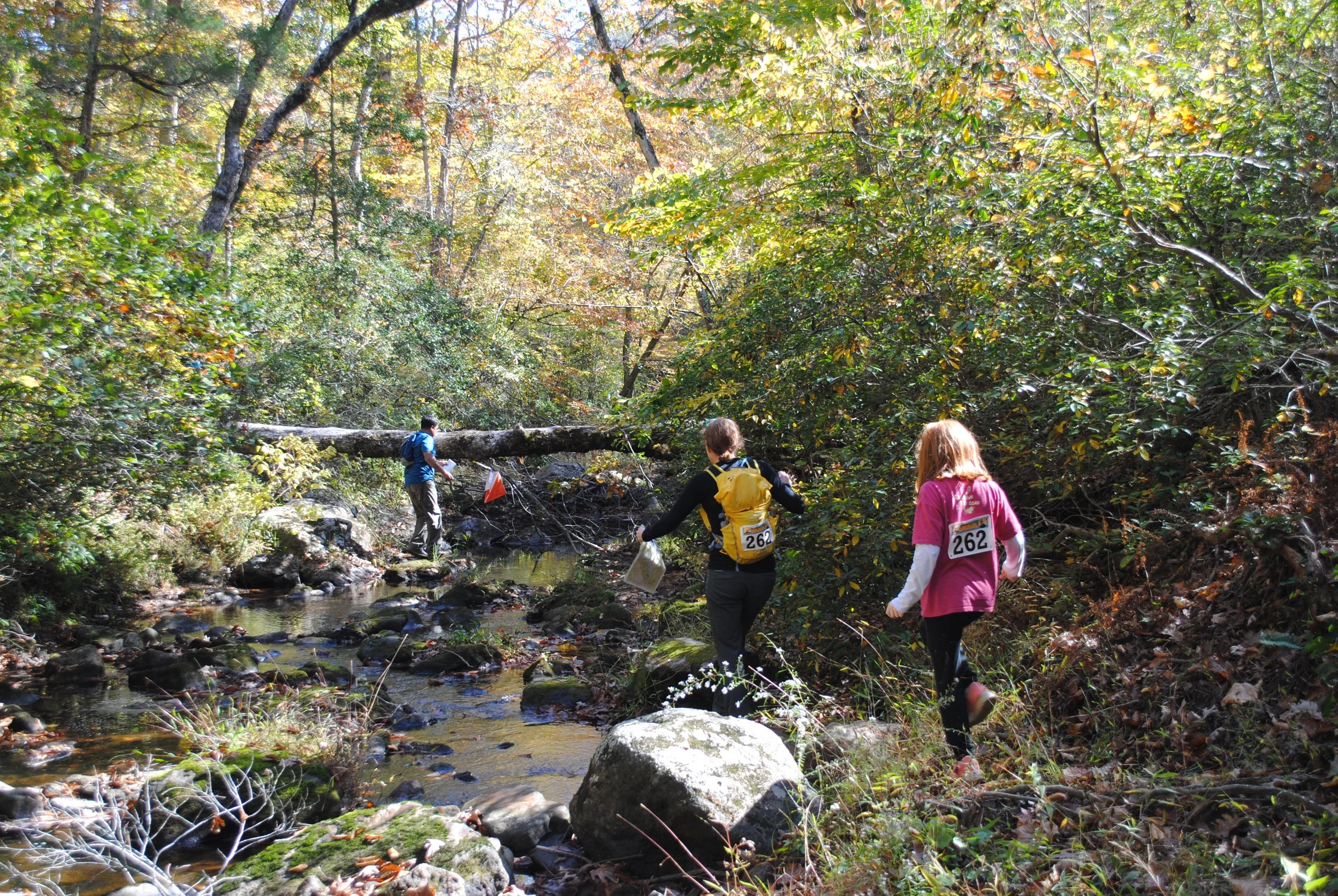Getting Started
So, you’re ready to be an adventure racer!
If you haven’t already heard, adventure racers have a mantra that goes something like this: “the hardest part of adventure racing is getting to the start line.”
As you ponder jumping into the amazing, crazy, inspiring, roller coaster world of AR, keep this saying in mind. As is true of any new endeavor, the biggest hurdle is getting started, and adventure racing, as you likely know, offers some unique challenges. In addition to picking a race, new racers often feel the pressure or need to acquire new skills, add to their gear closet (or start one from scratch), coerce some friends or strangers into joining them, and then figure out how to train for an event that, even at its shortest, might be hours longer than any other event they have completed. This basic list doesn't address the endless details of advanced adventure racing such as foot care, sleep deprivation, and nutrition.
The good news is that the AR community is one of the most welcoming groups of athletes out there. There are few, if any, sports that sees new racers rubbing shoulders with the elite on the start line. The AR community is small and well connected, and we all are always happy to talk gear, training, and experiences with new racers.
Finding a Race
There tends to be two primary types of rookie adventure racers: those who dive into the deep end and sign up for a multi-day expedition race like those in the AR World Series, and those who decide to start small, test the waters, and build up - whether the ultimate goal is a multi-day event or mastering the six-hour sprint. There is no right way to do it, its more about your own style and comfort. Unless you are an experienced endurance athlete with a well-established aerobic base and strong skillset in mountain biking, bushwhacking, paddling, and other wilderness skills, there is something to be said for finding a sprint or half-day adventure race to take to AR in smaller bites. It will be considerably more affordable, the stakes are much lower if your teammates don’t work out, and you will have a much higher chance of success (more on this later).
Where do you begin to find an adventure race? USARA publishes a calendar of USARA sanctioned races. These are races that abide by a specific set of USARA standards, and are most likely insured through USARA. USARA also includes on that calendar other events outside of USARA sanctioning as well as many other navigation-centric “similar” races like trekking-only orienteering events. Orienteering or “rogaine” style races tend to be foot-only events and can provide a good feel for what AR is like without the hassle of all the gear and usually with lower entry fees. Most importantly they can introduce you to being navigation-centric.
If you’d like a little navigation practice before doing your first adventure race, local orienteering club meets can serve as a terrific portal for adventure racing. These groups host events periodically throughout the year, and some of the bigger clubs often organize courses on most weekends, spring to fall. Usually only $5-10 to enter, o-meets offer a range of courses that you get to select your level of difficulty from beginner to advanced. While the maps are distinctly different, usually much more detailed, from those typically found in an adventure race, these meets often include hands-on instruction and offer terrific practice when it comes to basic and advanced navigation. Other than some snacks, water, and a positive attitude, all you need is a compass!
Ultimately, think about what feels right for you and then explore your local options. Many new racers can find a 3 to 6-hour event to be daunting enough. Others feel ready for a whole day in the woods. And a few feel confident enough that they can take on a ten-day expedition like the World's Toughest Race: Eco-Challenge. No one knows you better than yourself, pick what feels doable for you.
Going Solo or Finding a Team? and Setting Expectations
While there are those in the adventure racing community who race solo, AR is, at its core, a team sport. To truly get the whole experience, try to build a team. Many new racers find this to be a challenge. While you may think six, twelve or twenty-four hours in the woods, without sleep, in the rain, heat, or snow, shortcutting through marsh/mud sounds fun, don’t be surprised when friends, family members, and colleagues laugh you off as mildly insane.
Adventure racing developed originally as a team-based sport that required mixed-gender teams at the premier level, though most races now include divisions for single-gender teams. As noted above, some races offer solo racer divisions, however, many racers seek to race as a team for at least some portion of their racing career. Racers looking to find teammates can check out resources like the Adventure Race Teammate Finder group on Facebook or contact their local race director to learn about other racers who are looking for teammates to compete in their races.
Again, this is where starting off small can make breaking into the sport a bit more manageable. It will be a lot easier to convince your partner, childhood friend, or coworker to join you for a four- to six-hour event than a 24-hour one. Once you knock off that six-hour sprint, the twelve-hour will feel more manageable. After realizing that your body and mind can do more than you expected, going overnight won't feel so daunting. Building this experiential memory with a teammate or two will increase the chances that you find your place in the sport.
It may take some time to find a team you race well with. Successful teams, whether those who have known each other for years or who are meeting just before toeing the start line, communicate effectively well before race day. It is important that all teammates agree on the goals for the race, and if racing solo, it’s important to think about these same things before you get out on the course:
Are you aiming for a podium finish or just hoping to enjoy a day outside?
How hard will you push?
What kind of training effort are you putting in before the race?
Who is bringing what gear and do you have the mandatory gear list covered?
What are your strengths and weaknesses, if on a team how can you support each other at low moments?
These questions can be helpful to address directly before a race, particularly for teammates who have not raced with each other before. Teams should also discuss who will fulfill key roles on the team such as lead navigator (or sharing navigation roles) and the responsibilities of the captain, which can range based on team preferences from the teammate responsible for organizing pre-race logistics to the primary decision-maker in the event of disagreements. Expedition race teams may also discuss their sleep strategy for multi-day racing.
So, find your people and then set some expectations. Many of the most successful adventure racers started off with modest goals: don’t finish last, finish mid-pack, or simply finish. Once they started to build their experiential toolbox, find stable teammates, and fine-tune their skillsets, then they started to set higher goals: finish in the top third, complete a full-course, shoot for their divisional podium, and then, perhaps, shoot for the overall mixed-gender podium (FYI: despite what some new racers expect, the premier mixed teams often are the strongest teams at a given event, especially when events are twelve hours or longer).
Finally, remember that AR is also unique for being a mixed-gender sport. Few other sports join male and female competitors on the same team. Embrace this aspect of the sport if you can.
Setting and Training For Your Goals
Training for your first adventure race will vary significantly depending on the kind of race you are getting ready for, the disciplines involved, the length of the race, and your and/or your team's goals. Many teams enter the sport with the goal of "finishing as friends," while others also seek to compete at a high level. Accordingly, training can range from increasing your time spent outdoors with fun day-trips, to a near part-time job with a focused training plan.
AR is a sport that uniquely favors skills and experience; those things vastly outweigh speed, power, and athleticism. Time and time again, the overconfident rookie team marvels at and wonders how the wily, seasoned AR veterans finish hours and hours ahead, at how the winners are able to “clear the course” (complete the entire course as designed) while the less experienced teams struggle to finish significantly modified and shorter courses, and at how efficient those top teams are with navigation, strategy, and transitions.
While physical preparation is an important component of the sport, training goes beyond just “working out.” It’s other things that truly set the more successful teams apart: navigation ability, team chemistry, experience with sleep deprivation, strategy, and the knowledge and experience that comes with racing over and over again. Unlike more traditional races like marathons or triathlons, adventure race courses are always different every race. They are constantly changing, sometimes literally evolving during the race, as unexpected circumstances force Race Directors to adapt and modify section by section. Being able to adapt to rapidly evolving conditions, poor mapping data, unforeseen obstacles, and inter-team dynamics in both art and science; it is a set of skills that can only be refined and developed through racing, and racing with an established team with whom you build a racing and adventure rapport.
Because adventure races require skill in navigating with a map and compass, it is important that at least one, if not more than one, member of each team be proficient in this domain. Joining your local orienteering club is a great way to develop this skill in shorter events. You can also familiarize yourself with map reading by bringing topographical maps with you on hiking, biking, and paddling trips. TanZ Navigation is an excellent resource for AR-focused navigation training, offering Squiggly Lines (a book on AR navigation) and virtual orienteering events.
This isn’t to say you should neglect the physical components of AR, we’ll cover these in more depth later but definitely begin getting in the habit of “doing stuff.” Be it longer hikes, bike rides and paddles, get your body used to doing these activities for longer periods of time, and back to back. Some athletes prefer the structure and care of working with an AR-focused endurance coach. USARA has partnered with several adventure racing specific affiliated-coaches who can help you ff you're just getting into adventure racing or hoping to level-up next season. there are also several adventure racing organizations who offer AR-focused training camps with practice courses and the highly individualized and interactive programs.
Training is also an excellent way to find your preferred gear for AR. All adventure races publish a required gear list prior to the race with mandatory equipment to facilitate safe and efficient travel through the course. Be sure to review this list well before the race date to ensure that you and your team can source the required gear before race day.
Gear
Speaking of gear, we’ll go into this more later, but don’t be overwhelmed. Gear lists for adventure racing can sometimes seem daunting, especially when considering signing up for 24+hour events. If you have never competed in an adventure race and are starting from scratch, sure it can cost thousands of dollars to outfit yourself in quality gear for a multi-day race like Eco-Challenge, but you don’t have to start with the biggest race.
Chances are you can find beginner level races that require minimal equipment, or have options for equipment rental. Many races offer/include boat rentals as part of the registration fee. And while some equipment may still be required, reach out to friends, its likely you may know someone willing to lend the gear you need. We’ll get into Gear details in a later installment, but for now try and find a race that matches up well to your comfort on what is required.









